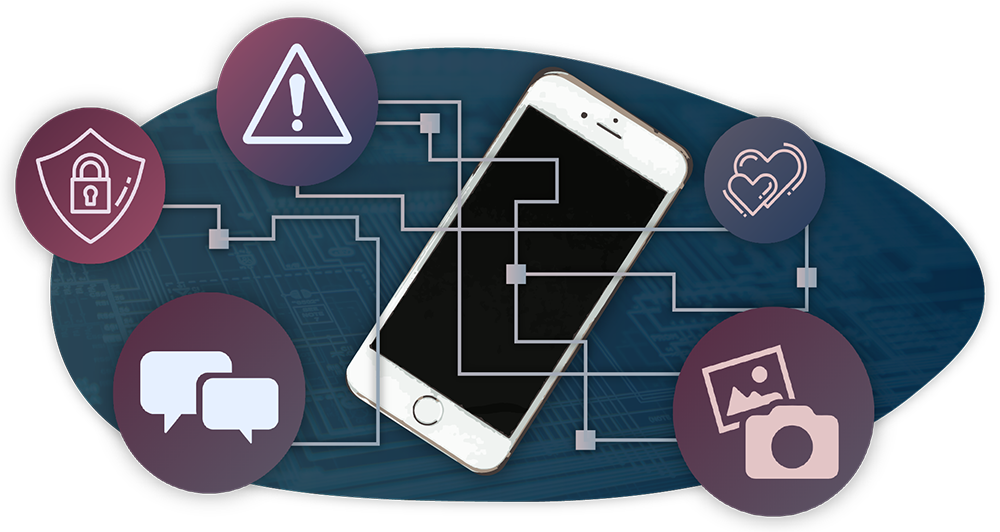When we imagine consent, we tend to envision it as an in-person interaction. However, as technology has evolved, our communication and social cues no longer look the way they once did. For many individuals, the majority of their interpersonal interactions take place online. With that being said, we should all have a basic understanding of what consent looks like through digital forms of communication and media.
So, what exactly is digital consent?
Digital consent covers a wide range of rules and regulations. Essentially, it is the idea of seeking and receiving permission online. This can be as simple as making sure you can post a picture or video of someone online, like on Instagram or Facebook. But, digital consent also deals with the way you handle intimate relationships online. For example, pressuring someone to send a private image of themselves is an issue that happens often. Many individuals want to send an intimate picture to a significant other. However, sometimes, people feel that they have to send a picture and are guilted into it or even receive threats if they don’t. For example, they may say that they will break up with you if you don’t send them nude images. Remember, consent should always be an excited and enthusiastic “yes,” not a fearful one. Coercion, manipulation, and threats do not equal voluntary sexual activity, even if it’s done virtually. If that picture is leaked, it is a crime, and you can sue that person.
Below are some more examples of ignoring digital consent:
- Sharing an extremely personal message someone sent you with others after they said to tell no one. (unless you share the message because it involves their safety and well-being)
- Trying to log into someone’s social media account(s) without their permission. In some cases, one may switch the password once logged in and violate that person’s privacy by looking at their messages and other private information.
- Going onto a person’s cellular device without their consent for reasons that do not involve their safety.
- Posting or sharing a picture of someone after they said they don’t want others to see it.
- Making a fake social media account pretending to be someone else. If this happens to you, have yourself and others report the account. This is also a crime, so you can contact the police if it continues to happen.
- Taking a photo of someone when they are unaware, or in a vulnerable position is also a violation of their digital consent. An example of this could be changing in a public dressing room, and someone snaps a picture of you.

How To Seek Consent Online:
The best way to gain consent from an individual online is to have open communication and honest communication. It’s very simple and a typical phrase in seeking online consent can include the following. “Can I… post this picture of you?” or “Is it okay if I take a picture of you right now?” Anytime you seek consent, there should be an excited “yes” from the other person. There should also be no pressuring, coercion or guilt.
When having a healthy and consensual relationship it would still be advised to not send intimate images, and if you’re under 18 that can be seen as a crime. However, if you do plan to ask or send photos, perhaps having an open discussion on what privacy looks like would be beneficial. Letting this person know your limitations and hearing their own is important, as trust and communication are crucial. In many relationships, sharing social media passwords has also become a common phenomenon. No one should pressure you to do this. If these boundaries appear to be challenged, it would also be advised to re-evaluate the relationship. Remember, just because you’re dating doesn’t mean you have to give in to certain expectations they have that you are not comfortable with.
When our online consent is overstepped, we feel little safety in the world. It can make us feel like our privacy is of no importance to others, as the click of a button disregards it. If your online privacy has been violated, we would advise you to change all passwords and set up two-factor authentication for social media accounts. If someone posted a photo or video on a website you never consented to, contact the editor or digital director of that platform. They have the power to take it down and have all traces removed from the site. You should be able to find this email in the “Contact Us” section of the website.
For more information on what to do if your private images or videos are shared through a messaging system or online platform, Vesta has created a guide to help you through that process. If you suspect that your smart devices are being violated and used against you, we also have an article on protecting yourself against smartphone abuse.
In the meantime, please know that your feelings are absolutely valid, and you have a right to be angry and upset. Whether you trusted someone with personal images, left your phone alone for five minutes, or had a picture of you snapped during a vulnerable moment, it is not your fault. So, don’t place blame or torture yourself over what took place. If you need someone to talk to, reach out to a helpline, therapist, or confide in a trusted friend or family member. Gaining their perspective and guidance could be beneficial and help you manage this situation. You deserve support and will get through this challenging time.
Media Removal
If you or someone you know has had a private image or video put online without consent, you can use one of these safe and secure resources to seek removal of the content. But, before removal, remember to document it first (i.e., by using a screenshot).
- https://needhelpnow.ca/app/en/ (targeted for youth but can be applicable to anyone)
Helpline:
https://www.opencounseling.com/hotlines-ca
Resources:
https://nationalonlinesafety.com/webinars/digital-consent
